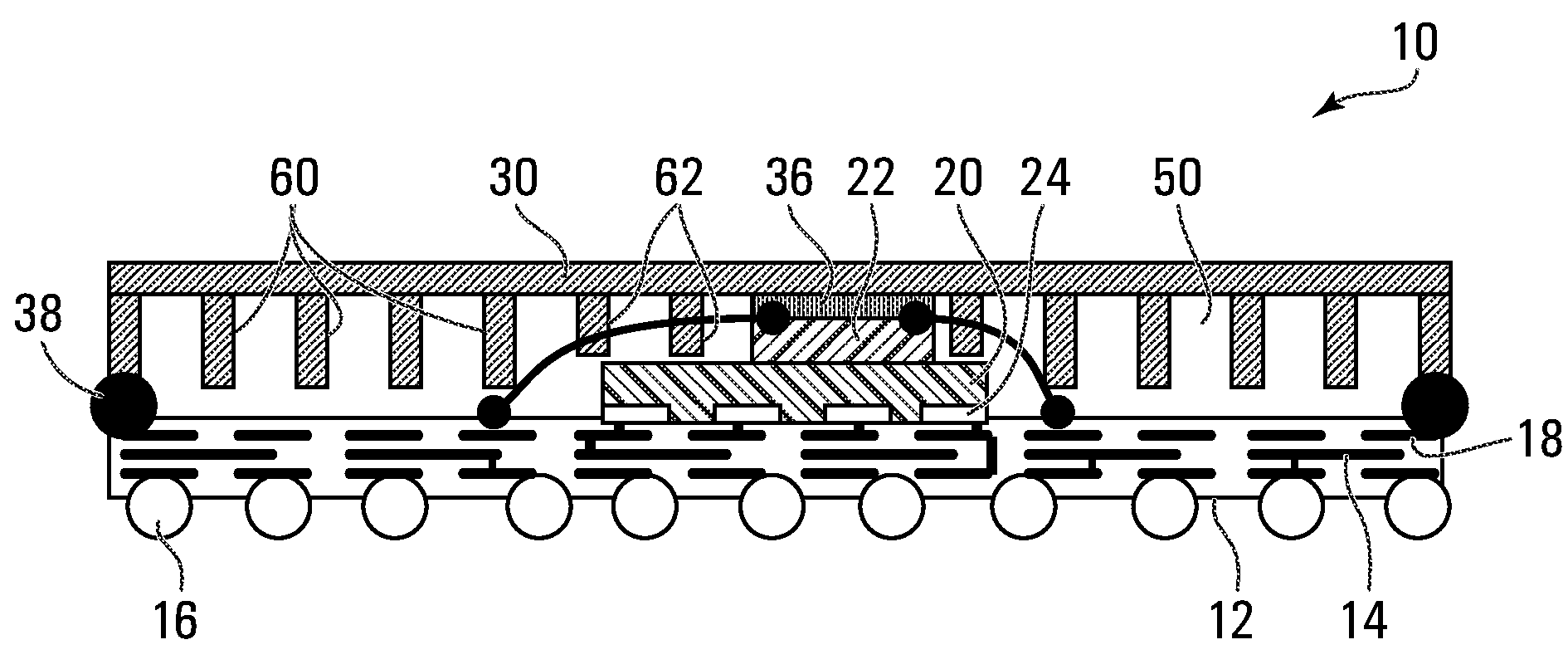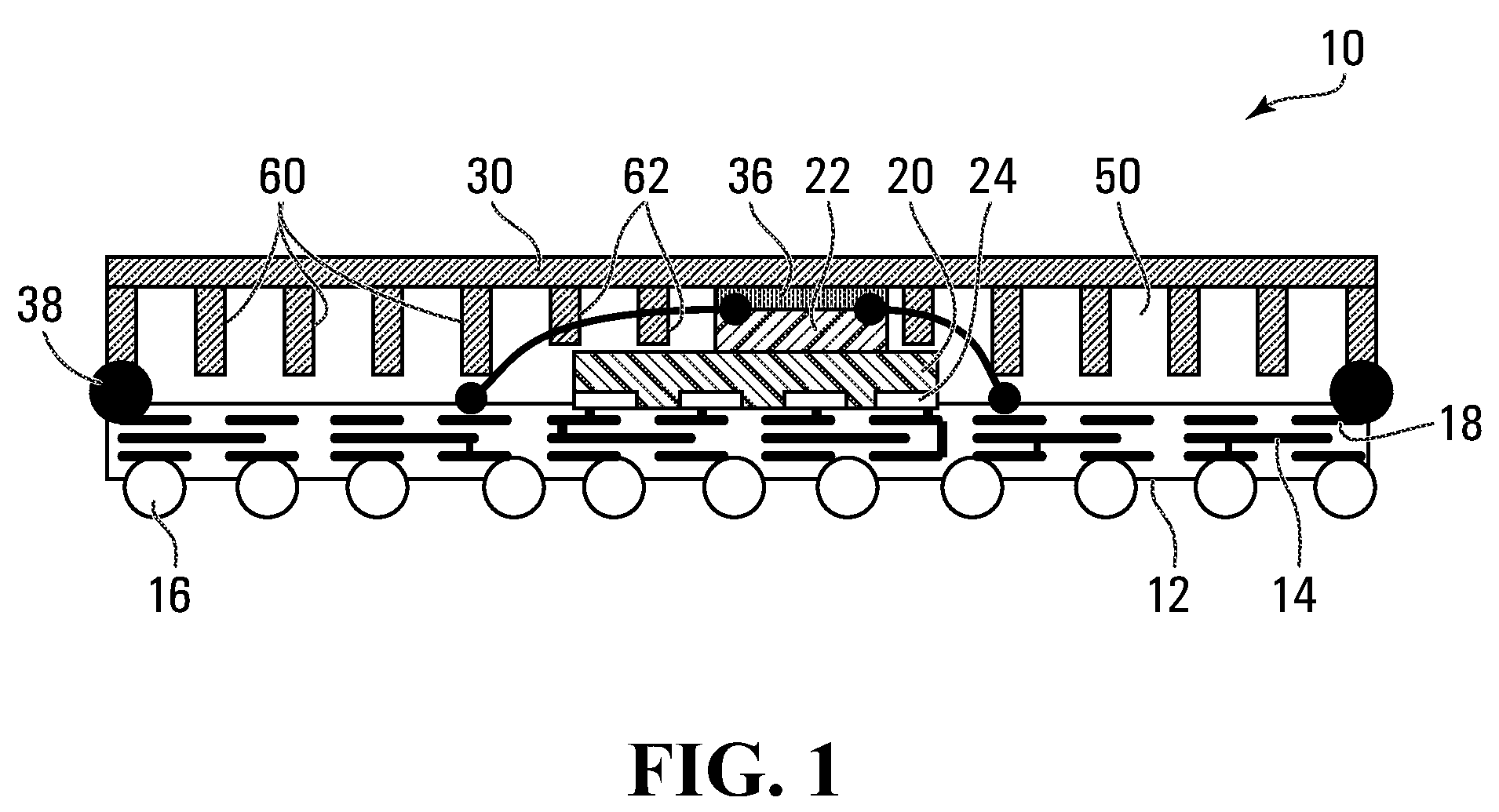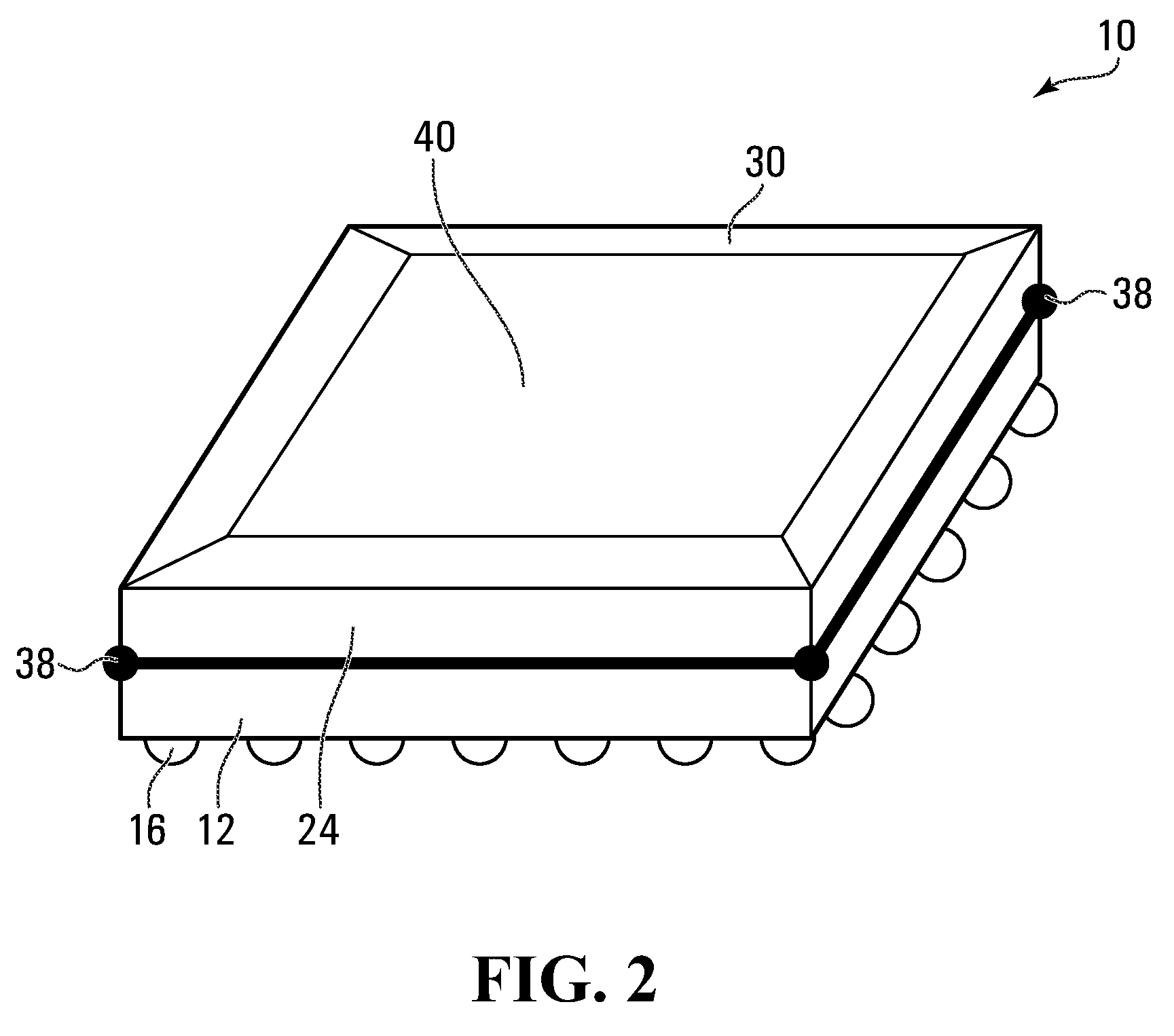Multi-die semiconductor package with heat spreader
a semiconductor and heat spreader technology, applied in semiconductor devices, semiconductor/solid-state device details, electrical apparatus, etc., can solve the problems of inability to remove heat from the package, inability to meet the requirements of semiconductor manufacturing, and inability to meet the requirements of manufacturing
- Summary
- Abstract
- Description
- Claims
- Application Information
AI Technical Summary
Benefits of technology
Problems solved by technology
Method used
Image
Examples
Embodiment Construction
[0022]FIG. 1 shows a semiconductor device 10, exemplary of an embodiment of the present invention, in cross-section. As illustrated, semiconductor device 10 includes a substrate 12, several dies 20, 22, package pins 16 and a lid 30. As will become apparent, lid 30 acts as a heat spreader.
[0023]Formed within substrate 12 are multiple metallization layers 14 formed proximate the bottom surface of substrate 12. Metallization layers 14 may be connected to each other with microvias 18, and electrically interconnect dies 20, 22 to package pins 16.
[0024]Exemplary substrate 12 is single sided: metallization layers 14 are formed only proximate one side of substrate 12. Conveniently, in a single sided substrate, plated through holes which may span the entire height of the substrate between metallization layers on opposite sides of the substrate are avoided. Of course, substrate 12 could be replaced with a dual sided substrate.
[0025]Package pins 16, may be pins, solder balls arranged in ball g...
PUM
 Login to View More
Login to View More Abstract
Description
Claims
Application Information
 Login to View More
Login to View More - R&D
- Intellectual Property
- Life Sciences
- Materials
- Tech Scout
- Unparalleled Data Quality
- Higher Quality Content
- 60% Fewer Hallucinations
Browse by: Latest US Patents, China's latest patents, Technical Efficacy Thesaurus, Application Domain, Technology Topic, Popular Technical Reports.
© 2025 PatSnap. All rights reserved.Legal|Privacy policy|Modern Slavery Act Transparency Statement|Sitemap|About US| Contact US: help@patsnap.com



